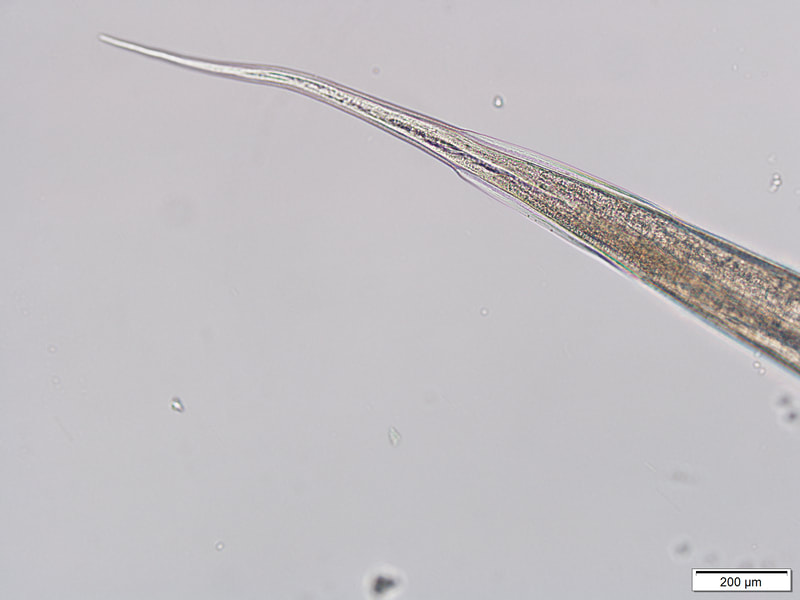The chicken or the egg?Three chickens were submitted for necropsy to the Oklahoma Animal Diseases Diagnostic Laboratory. A history of poor feather condition, decreased egg production, and increased mortality was reported. The ceca of the birds were submitted for fecal examination and parasite identification. During gross examination several adult parasites were observed in one of the chicken’s cecum (Figures 1–3). The fecal content was pooled for a centrifugal fecal floatation using sugar solution and the following eggs were observed (Figures 4 and 5). Heterakis spp. Heterakis spp. are common parasites in poultry and wild bird hosts. Adults are found in cecum. Eggs are passed in the feces of poultry and become infective in the environment. How were the chickens infected? Ingesting eggs from contaminated environment or through ingestion of earthworms that act as transport host. Is it pathogenic? Heterakis gallinarum is usually nonpathogenic, however they act as vectors of the protozoan Histomonas melagridis (blackheaded disease) which can be a life threatening infection, particularly in turkeys. How do you treat it? Piperazine is an anthelmintic approved by the FDA for use in chickens to treat ascarids. Fenbendazole has also been shown to reduce the number of Heterakis gallinarum in infected birds by less than 90%. (1, 2) Reference:
Comments are closed.
|
Archives
July 2024
Have feedback on the cases or a special case you would like to share? Please email us ([email protected]). We will appropriately credit all submittors for any cases and photos provided.
|





